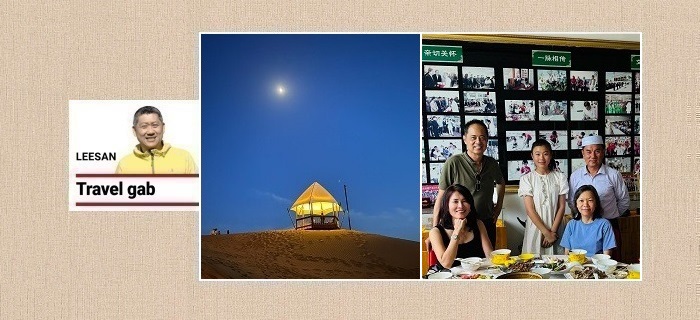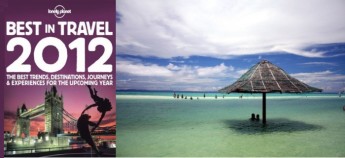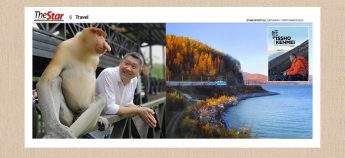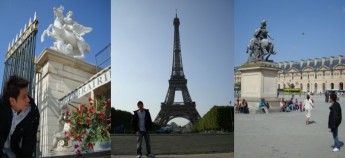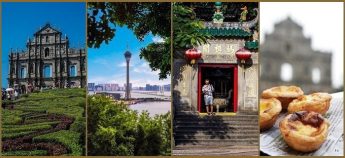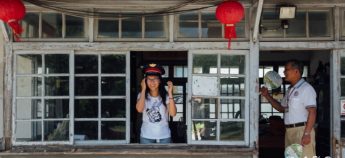A star quality destination – by leesan
Once a little-known region, Ningxia in china is fast becoming one of the country’s top attractions.
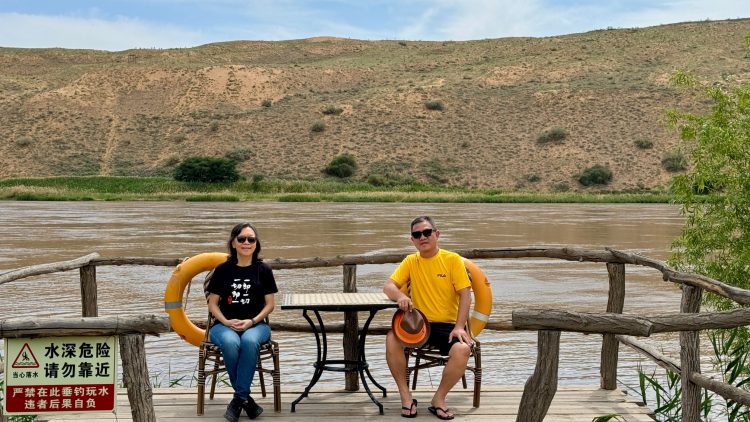
The yellow river flows through Ningxia, and along the river you will find some lovely homestays like this one. — Photos: Leesan
BEFORE coming to Ningxia in north-central China, all I knew about the place was that it is synonymous with desert dust storms, sour milk, and poverty, and is a fifth-tier autonomous region (regarded as the poorest, based on China’s City Tier system) with hardly any tourist attractions.
At the time, the only place I knew that was worth visiting in the region was the Tengger Desert, where one could lie down in the sand and be mesmerised by the countless stars in the skies.
Fortunately, Xiaohongshu(Little Red Book, China’s version of Instagram) offered me some clues as to what else the place had to offer. And thanks to that, our company decided to open up a cultural travel route to explore Ningxia in great depths.
Although Ningxia is not a wellknown holiday destination, it does have many hidden gems waiting to be discovered by adventurous travellers.
There are some 1,862,500 ethnic Hui people living in Ningxia, which is about 18% of the total in China. Our tour guide Wang Yan playfully said that out of the 10 residents carrying the surname “Ma” in Ningxia, nine are usually Huis.
The Huis and the Hans have been living peacefully here for centuries despite their many cultural differences. Inter-marriages are pretty common here, too.
Around 40% of Ningxia’s 7.3 million residents are Hui Muslims, known for their friendly and welcoming nature.
While having dinner at a Muslim restaurant in Ningxia, we could see many Han customers enjoying scrumptious mutton dishes.

The Hui muslims of Ningxia are excellent cooks so make sure you check out the homestays for some home-cooked meals.
City of mountains
Ningxia is known for its three mountains and one river: Helan Shan, Liupan Shan, Luo Shan, and the Yellow River. There are also two dunes called Shahu Lake and Shapotou, one mausoleum (Western Xia Mausoleum), two fortresses (Jiangtaibo and Zhanbeibao), and the Ancient Great Wall.
Apart from that, you can also find the Qin Dynasty Great Wall which measures hundreds of kilometres long, and the site of the Ming Dynasty Great Wall in Ningxia. Both have been dubbed “China’s Great Wall Museums” by historians.
Our night flight cruised above the 2,100-year-old city of Yinchuan with its many dazzling lights and modern high-rise towers.
The city lies a mere 15km from the desert, but thanks to the authorities’ “desert control” efforts over the last two decades, the city has managed to free itself from perennial dust storms that could last up to 300 days a year in the past.
Notably, Yinchuan’s eight thoroughfares criss-cross the entire city, facilitating the movements of residents. On both sides of these thoroughfares are trees, flowering shrubs, lotus ponds, wetland parks and walkways. It definitely doesn’t look like any fifth-tier city that I know of.
And with a population of three million, the city’s streets and buildings are all spotlessly clean.
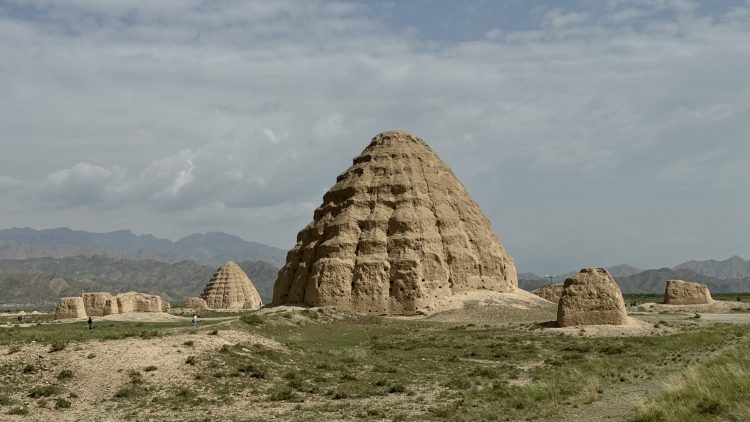
The Western Xia dynasty royal tombs has nine imperial tombs and over 250 graves.
They are known for their ‘eastern Pyramids’ architecture.
Beauty of Helan
The 270km-long Helan Shan range is one of a few north-south mountain ranges in China, with an east-west width of 20km to 60km. Oboo is the highest peak at 3,556m above sea level.
Helan Shan forms a natural geographical border in China’s northwest. There’s the Alashan Plateau and Tengger Desert in the northwest, and the Yinchuan Plain and Ordos Plateau on the east. Helan Shan also forms a climatic border between monsoon and non-monsoon climates.
It is surrounded by three deserts – Mu Us, Ulaanbuh and Tengger – and as such, the moist oceanic currents have very limited influence over the mountain range. However, the area is frequently affected by the Siberian cold front. As a result, Helan Shan is very dry, with distinct seasonal changes and intense sunlight throughout the year.
We rode on one of the world’s only three massive cross-country SUVs through the rough terrain to discover the hidden beauty of Helan Shan.
The place is known for its colourful history, and has historical attractions like the renowned Western Xia Mausoleums, ancient rock paintings, the Gunzhongkou scenic area, Twin Pagodas of Baisikou, and Sanguankou Ancient Great Wall.
At the eastern foothills of Helan Shan you will find a vine corridor stretching over a hundred kilometres from Ganchengzi in the south to Shizuishan in the north. This is the biggest and most concentrated wine-producing area in China, with over 200,000ha of land under grape cultivation.
There are more than 200 wineries scattered around Helan Shan producing internationally-acclaimed red wines. The soil in the eastern foothills of Helan Shan is perfect for grape cultivation.
Three decades ago, this whole area was still barren land but today, it has been transformed into a sea of vines by the rapidly growing wine industry.
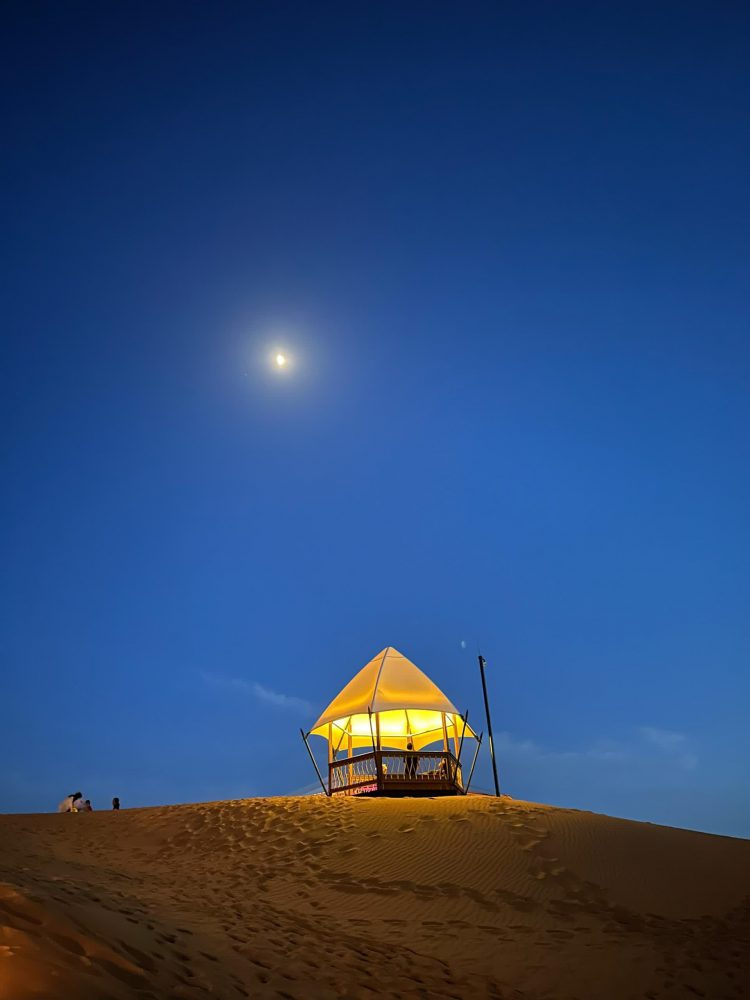
Thanks to Ningxia’s innovative ‘sand control’ system, sandstorms are no longer a problem now.
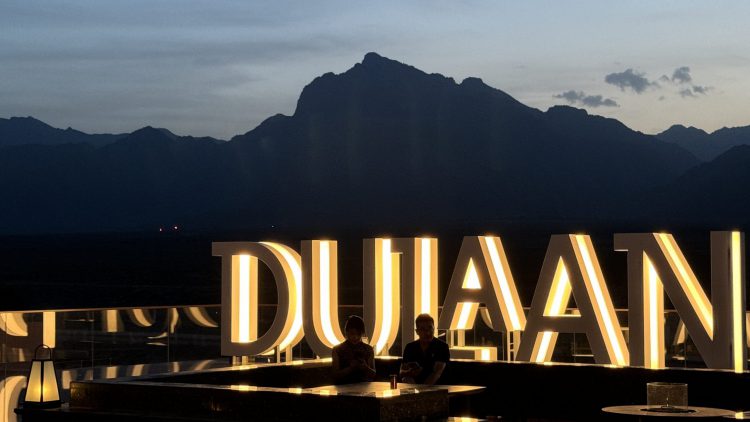
Helan Mountain, China’s only north-south mountain range, stretches 270 kilometers. Its eastern slopes lie in the world’s “golden grape-growing region,” with conditions similar to Bordeaux, France. Over the years, Ningxia has built strong ties with Bordeaux, gaining global recognition through wine exchange and collaboration.
The stars
Located in the middle of the Tengger Desert in Zhongwei City, Desert Star Hotel is the brightest “star” in an otherwise barren desert where one can actually see millions of twinkling stars.
It is not difficult to understand why Ningxia is known as the “hometown of stars”, with Tengger Desert a particularly marvellous spot for star-gazing.
The Desert Star Hotel is a major tourist development project in Zhongwei City, and said to be the most luxurious desert resort in all of China.
The area boasts of having more than 300 days of clear skies every year. Owing to its remote location far from any human settlement, the place is also free from light pollution.
For centuries, Ningxia has been known as the “Jiangnan North of the Great Wall” bordering Shaanxi Province to its east, Inner Mongolia Autonomous Region to the west and north, and Gansu Province to the south.
Ningxia is the only Chinese provincial-level region located entirely within the Yellow River Basin. Irrigation facilities from the dams constructed across the Yellow River have transformed the barren desert lands of Ningxia into vast grasslands dotted with lakes and farms.
Because of this, travelling across Ningxia is like walking into a microcosm of China’s varied ecosystems, from sand dunes to bustling cities teeming with greenery.
What’s more surprising about Ningxia is that its transformation from being a little-known place to a much sought-after holiday destination for the Chinese took place within just 20 to 30 years.
Is it worth travelling to Ningxia? Definitely, as it is such a fantastic place to explore.
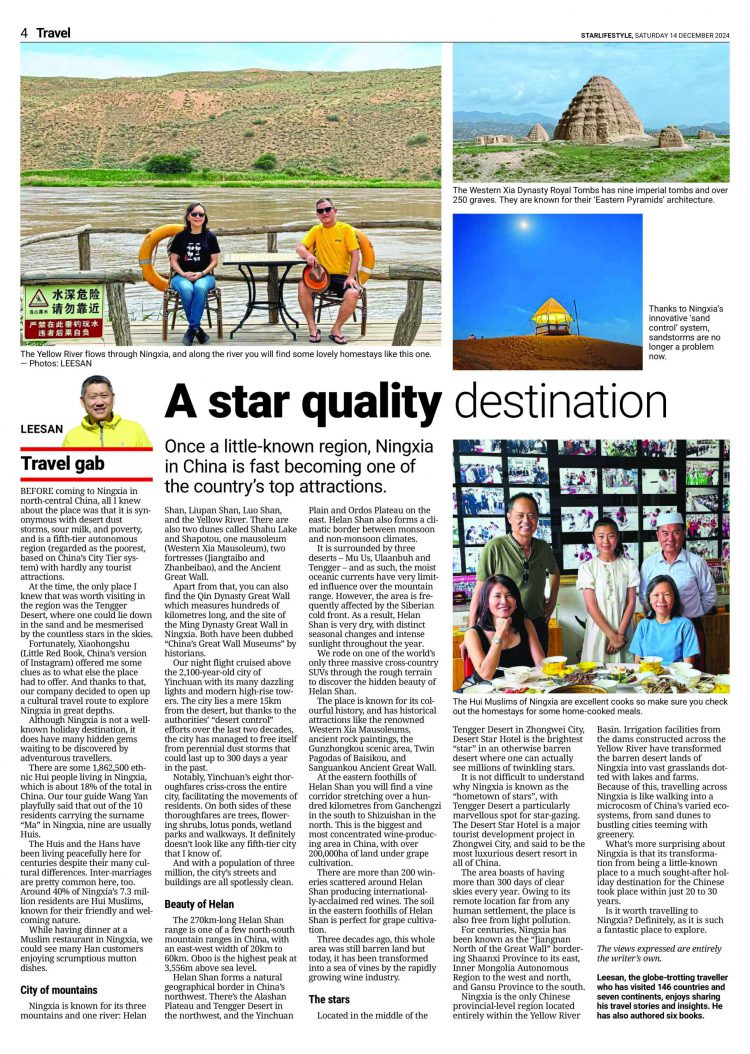
Published in The Star, 14 Dec 2024
全球超过80000家酒店,Apple101助您轻松订房,出行无忧,绝对优惠价。入住期间付款,多数客房可免费取消!
